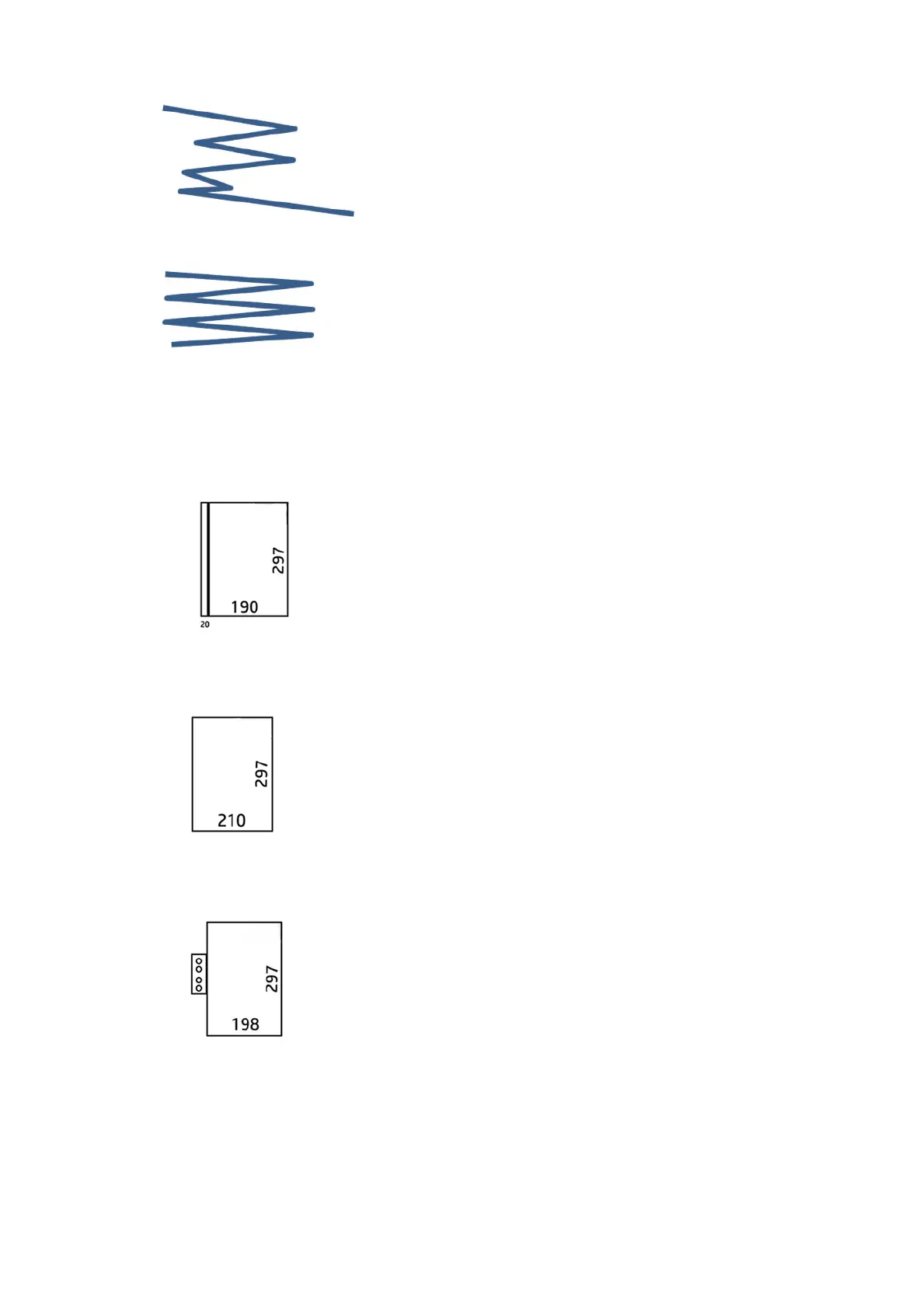DIN B
The top and bottom folds are always on opposite sides. If this is what you want, select a
folding style below marked with an asterisk, as these are the ones based on DIN B style.
All folding styles that include a ling option (tab or ling margin) need to follow that
conguration. It requires compensation folds in many formats since the last page’s end
needs to be in a certain position for the ling option (hanging strip/ling margin). As
those packets have more, unevenly distributed, folds, they tend to be thicker on one
side making them topple over when you pile them up. Furthermore, the stack gets
bigger.
DIN C
The top and bottom folds are not necessarily on opposite sides. There are no
compensation folds, which means that you are getting a thinner and more even stack
when plotting a lot of prints and keeping them in one stack, either in plastic jackets or in
envelopes/ folders.
DIN
●
DIN A 190+20 × 297 mm (with binding edge)*
190 mm width, 20 mm margin, 297 mm height
●
DIN B 210 × 297 mm (back panel covered)*
210 mm width, 297 mm height
●
DIN B 198 × 297 mm TAB*
198 mm width, 297 mm height, with tabs
ENWW Folder 95

